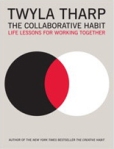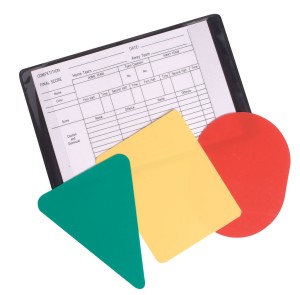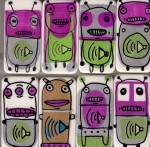“Reading is to the mind what exercise is to the body.” – Sir Richard Steele
In the spirit of year end “Best of” lists and gift ideas, I’ve decided to pull together a list of 10 great books for mediators. This is not a list of books from this year only, nor really a “best of” list – 10 is way too small a number for that! It’s a subjective list of books that I’ve read for the first time – or have returned to – this year, and that I’d recommend to other mediators to jolt their mediation practice. The holidays offer the perfect time to read a book you might not normally have time for and consider some new ideas for your mediation practice. Many of these books are available through CoRe’s aStore: purchases made through the aStore have the added advantage of supporting CoRe Clinic.
In no particular order, then, 10 Great Books for Mediators:
 1. The Mediator’s Handbook, 4th edition – Jennifer E. Beer and Caroline C. Packard with Eileen Stief
1. The Mediator’s Handbook, 4th edition – Jennifer E. Beer and Caroline C. Packard with Eileen Stief
The revised and expanded fourth edition of this mediation primer was released this fall and it’s well worth a look. This text is practical, readable, and a great tool for new and experienced mediators. If you have an older copy, the update is worth the price.
 2. Dancing with a Ghost: Exploring Aboriginal Reality – Rupert Ross
2. Dancing with a Ghost: Exploring Aboriginal Reality – Rupert Ross
Crown Attorney Rupert Ross discusses his own attempts to understand and learn from traditional Native teachings. Particularly in conjunction with his second book – Returning to the Teachings – this work offers an accessible and mind-opening perspective on the relationship between indigenous people and the Canadian justice system. Read this book as a jolt to dominant culture worldview.
 3. Click, Clack, Moo: Cows That Type – Doreen Cronin, illustrated by Betsy Lewin
3. Click, Clack, Moo: Cows That Type – Doreen Cronin, illustrated by Betsy Lewin
Yes, it’s a children’s book, but I always liked it more than my children did. It’s a labour mediation between the cows and Farmer Brown, with Duck in the role of mediator! A great introduction to negotiating for children, and a fun read for adults. There’s a reason that it was a Caldecott Honor Book.
 4. Everything’s an Offer: How to do more with less – Robert Poynton, illustrated by Gary Hirsch
4. Everything’s an Offer: How to do more with less – Robert Poynton, illustrated by Gary Hirsch
This is one of the best books I’ve ever found on applied improvisation. While the book is written with application to business, its cross-over value for mediators and conflict resolution professionals is obvious when you see that the bulk of the book is made up of “Let Go, Notice More, Use Everything – A Fundamental Grammar of Relationships and Communication”, “Shaping Stories”, and “Improvisation and the Joy of Uncertainty”. I recommend it highly as an introduction to applied improvisation and a jolt to remind us not to “block” possibilities in negotiation through sheer habit and inattention.
 5. Rapid Problem-Solving with Post-it® Notes – David Straker
5. Rapid Problem-Solving with Post-it® Notes – David Straker
Definitely not a new book (published in 1997), but one I stumbled upon a few years ago and have found useful for commercial mediation work, in particular, simply because the techniques described have been adopted much more by the business world for strategic planning, brainstorming, etc. and are therefore familiar. The tools work well in large class settings for consensus building regarding selection of special topics for study, and can be applied to many training settings. If you would like to add some easy visual and/or kinesthetic tools to your toolkit, check out this handy little book for inspiration.
 6. Conflict Management Coaching: The Cinergy™ Model – Cinnie Noble
6. Conflict Management Coaching: The Cinergy™ Model – Cinnie Noble
This one is a fairly new book, but one that many in the community have been enthusing over since its release. Cinnie’s book is rightly touted as “thought-provoking”, “concise, comprehensive and informative” and an “outstanding contribution to the field of conflict management.” Cinnie focuses here on coaching people on a one-on-one basis to improve their skills for engaging in interpersonal disputes, and the applicability to many mediation settings is obvious throughout. I find the “synergy” amongst Cinnie’s reflective observations on coaching in workplace dispute, the more and more nuanced approaches being brought to bear in collaborative family practice by divorce coaches, and the increasing use of negotiation coaches/strategists in international business contexts inspiring.
 7. Definitive Creative Impasse-Breaking Techniques in Mediation – ed. Molly Klapper, J.D., Ph.D.
7. Definitive Creative Impasse-Breaking Techniques in Mediation – ed. Molly Klapper, J.D., Ph.D.
While I would dispute the use of “creative” in the title of this New York State Bar Association 2011 publication, this is a handy reference for the new mediator learning and practicing impasse-breaking skills. The primary focus is on a very specific style of court-based or “legal” mediation, and emphasizes the mediator’s role in assisting parties to evaluate their case as part of a primarily distributive bargaining process. Within that sphere, the book offers a useful summary of such commonly discussed topics as using the lawyer as impasse breaker, helping parties to value a case, how to respond to “insulting” first offers, and dealing with the predictable pitfalls of positional bargaining.
 8. Improv Wisdom: Don’t Prepare, Just Show Up – Patricia Ryan Madson
8. Improv Wisdom: Don’t Prepare, Just Show Up – Patricia Ryan Madson
Yes, it’s another improv book, but it’s also a particularly inspired and inspiring book on mindfulness and presence. So broadly applicable is the message that the book was a recommendation of Wiser Now: The Alzheimers Disease Caregiver Tips newsletter. As the author of that review writes, “Improv wisdom is about taking what life has given us and delighting in it to the fullest by connecting with the people who share our space on earth.” That tells you just why I think this is a wonderful gift book: it offers the lifelong gift of delight.
 9. Psychology for Lawyers: Understanding the Human Factors in Negotiation, Litigation, and Decision Making – Jennifer K. Robbennolt and Jean R. Sternlight
9. Psychology for Lawyers: Understanding the Human Factors in Negotiation, Litigation, and Decision Making – Jennifer K. Robbennolt and Jean R. Sternlight
Another new book for the list, Psychology for Lawyers turned out to offer one of the best readings on legal ethics I found for my Ethics and Professional Responsibility class this term – a chapter on Ethics that makes psychological sense of the question of how one finds oneself in an ethical problem in the first place and why we all tend to dig ourselves in deeper. The book provides a great overview of current research into perceiving, memory, emotion, judgment shortcuts, decision-making, persuasion and interpersonal communication and has a full chapter applying these studies to negotiation and mediation. If you are looking for a great resource on psychology, I’d suggest checking it out.
 10. The Collaborative Habit: Life Lessons for Working Together – Twyla Tharp
10. The Collaborative Habit: Life Lessons for Working Together – Twyla Tharp
You may have come across Twyla Tharp’s book, The Creative Habit? The Collaborative Habit is billed as its sequel, but works well as a stand alone book on the power of collaboration. Drawing on stories from the world of dance, the author offers examples of the process of collaboration, its strengths and challenges. Full of insights, the fact that the book is grounded in a different world (dance rather than mediation) is one of the reasons it connects so effectively: the resonances of shared experiences despite the difference in setting inspires self-reflection without the oft didactic feel of books that are about our own world.












